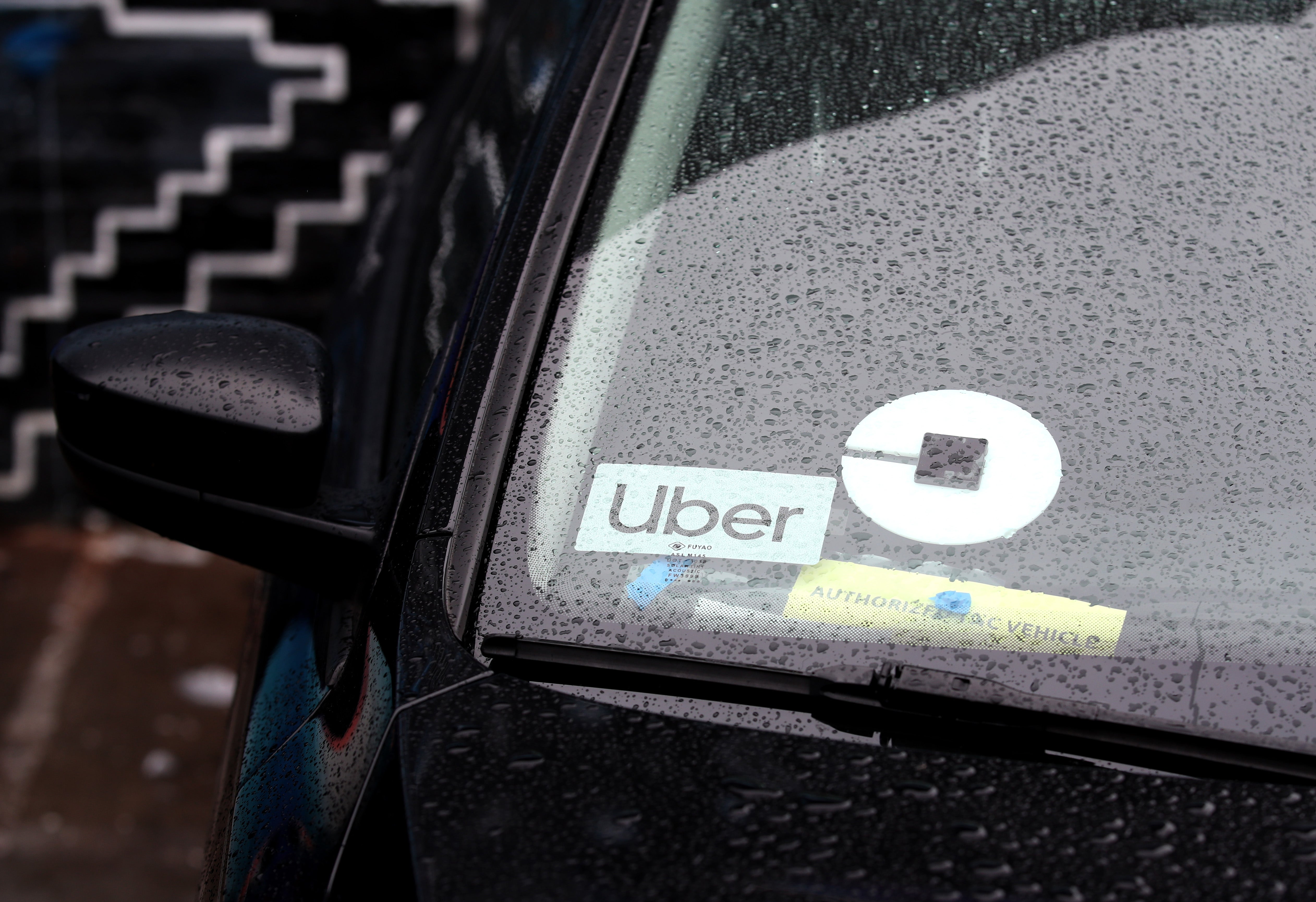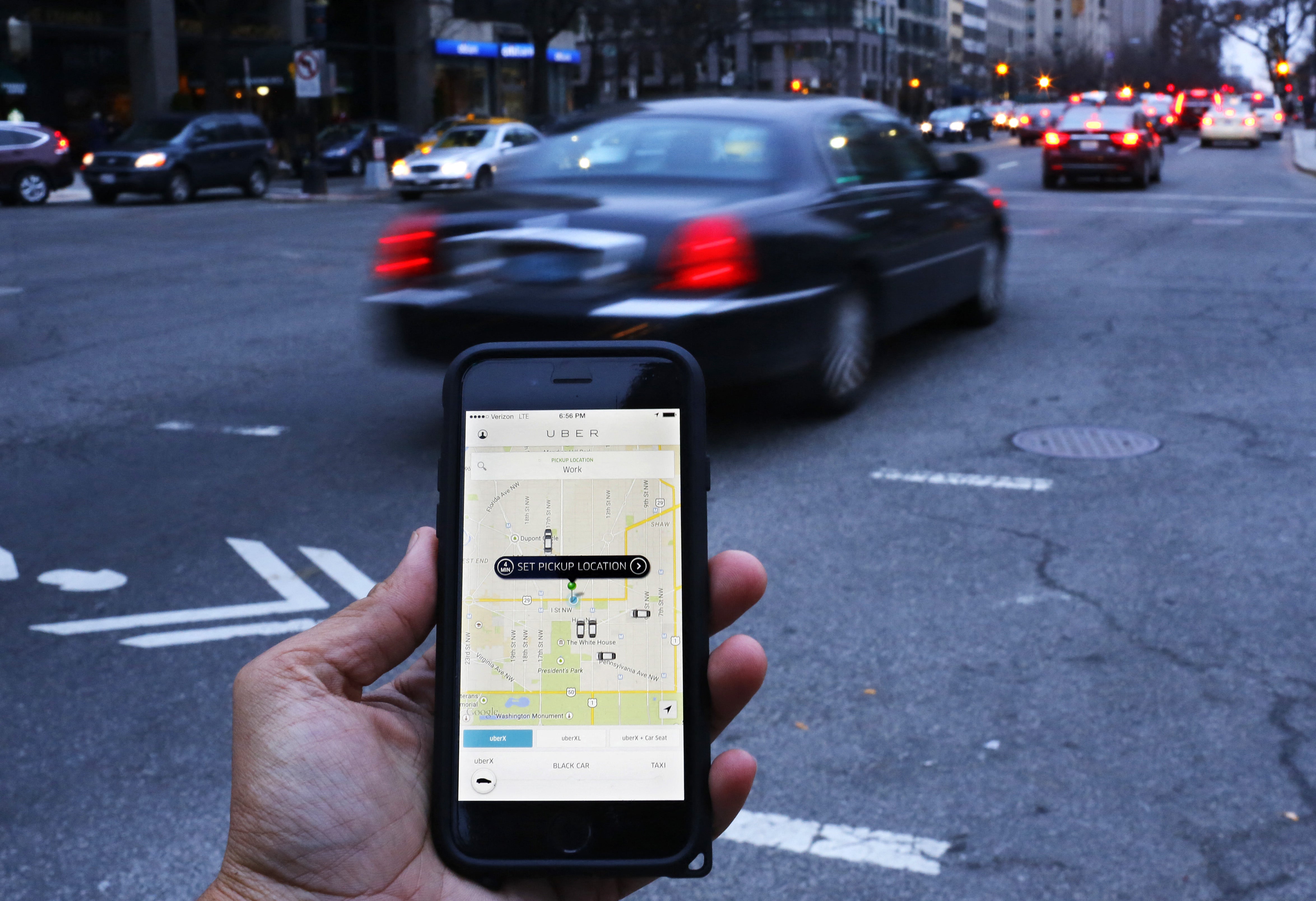In May 2021, an intoxicated Oklahoma woman called an Uber to take her home from her niece’s engagement party. Although the ride should have only taken 23 minutes, when she woke up hours later, she wasn’t home, but seated behind the steering wheel of a strange car, with her underwear in her purse and her jeans on inside out.
Her mind blurred with confusion and her body covered in bruises, she went to the hospital and was given a sexual assault examination, according to a civil lawsuit against Uber and the driver, seen by The Independent.
Authorities charged the driver, Timothy Alexander Greene, in June 2021. A jury convicted him of sexual battery two years later, court records show, and he is serving a 10-year prison sentence.
The woman’s horrifying assault in a ride-share vehicle is far from an isolated incident.
“Especially with solo female passengers, this is a huge problem in the industry,” Jim Mitchell, one of the attorneys representing the Oklahoma woman, told The Independent.

“Safety is a core value at Uber, and we have invested billions of dollars and countless hours to reduce safety incidents during trips, particularly when it comes to sexual misconduct and assault,” the company said in a statement on its website.
Across the country, passengers have shared claims of misconduct that took place in Uber rides. In Utah, a woman on her way home was subjected to unwanted touching. In California, a driver touched himself as a female passenger vomited. In Texas, a 20-minute ride turned into a five-hour ordeal and an alleged rape at a motel.
While Uber touts its safety record — and the company has implemented a string of features to protect passengers and drivers since its inception — allegations detailed in thousands of legal cases, internal company documents, and stories on social media underscore that staying safe in ride-shares is still an issue.
Uber received reports of sexual misconduct every eight minutes from U.S. riders from 2017 through 2022, documents first reported by The New York Times revealed this week. Over six years, that totaled more than 400,000 Uber trips in the U.S. resulting in reports of sexual assault and sexual misconduct, according to the report.
Uber’s 2022 safety report disclosed 12,522 sexual assault and misconduct reports over the same time period. The tech company addressed the large discrepancy in a statement posted on the company website Wednesday after the Times published its report.
The “vast majority” of the hundreds of thousands of misconduct reports were “less serious and non-physical in nature,” like flirting or staring, Hannah Nilles, Uber’s Head of Safety for the Americas, wrote.
Most of these 400,000-plus reports have not been subjected to a “rigorous” process that vets allegations and weeds out false reports made “with the goal of getting a refund,” Nilles continued. Uber claims that 99.99 percent of trips end without any issue. Roughly 0.006 percent of the 6.3 billion trips in the U.S. in the six-year span ended with a sexual misconduct or assault report, according to Nilles. The most serious reports accounted for 0.00002 percent — or 1 in 5 million trips — she said.
The vast majority of sexual misconduct reports between 2017-2022 were made by female drivers or riders. Women represented 89 percent of survivors, according to the company’s 2022 safety report.Uber has not released a safety report since.The Independent has asked the company why this is the case.
Uber identified other patterns in the sexual assault report data, according to internal documents seen by the Times. Incidents tended to occur late at night and on weekends with pick-ups near bars.
The company has implemented a series of safety measures over the past several years.
“RideCheck” uses GPS tracking to detect whether the ride stays on course, pinging drivers and riders to ensure they’re safe. There’s also a “Follow My Ride” feature that allows riders to share their trips so loved ones can track. But Uber acknowledges the features’ limitations.
“No single safety feature or policy is going to prevent unpredictable incidents from happening on Uber, or in our world,” Nilles told the Times.

In one case, what should have been a 20-minute trip became a harrowing five-hour ordeal that culminated in an alleged rape,The Times reported.
A woman in Houston requested an Uber in December 2023. The driver picked her up at 8.53 p.m. at an apartment complex to take her to a house 22 minutes away. But the driver took a detour to a gas station around 9.10 p.m., the records show. That’s when Uber sent a ping to check in on the woman, who didn’t respond.
By 9.29 p.m., the car continued to veer off the requested course and instead stopped at a motel. The company notified the woman again, and again, it went unanswered. Minutes later, Uber tried to get in touch with her with a robocall, to which she also didn’t respond.
The driver didn’t mark the trip as complete until 2.01 a.m. Three hours later, the woman called Uber, claiming that she had been intoxicated and woke up in a motel with the driver, who had raped her, the Times reported.
Uber banned the driver immediately after the alleged attack.
An investigation into him the following month revealed a “a concerning fact pattern” that included two previous accusations of sexual misconduct for inappropriate comments.
The three missed contact attempts served as a potential signal that something could have gone wrong in the trip, the documents said. The report asked: “Are our actions (or lack of actions) defensible?”
In Oklahoma, when charges were brought against Uber driver Greene in 2021, the State Bureau of Investigation warned that there may be other survivors. Authorities had “reason to believe other women could also have been assaulted by the ride-share driver.”
It appears that investigators found another survivor. Last June, Oklahoma County District Attorney’s Office brought another charge against Greene, accusing him of raping a woman in July 2019 while he was driving for Lyft, court records show. He has pleaded not guilty and is next due in court on August 20. An attorney for Greene declined to comment on the ongoing cases.
The woman filed a police report and contacted Lyft to report the alleged incident. Greene was booted from the platform, the 2021 civil suit says.
Greene then allegedly engaged in “platform hopping,” jumping over to Uber after being deactivated from Lyft, said Mitchell, who also represents the woman.

In March 2021, Lyft and Uber launched the Industry Sharing Safety Program which allows both companies to share information about drivers who were banned from the other’s platform for sexual or physical assaults.
“Any act of violence or assault has no place in the Lyft community or our society. When an incident is reported to us, our trained team takes immediate action to investigate, provides our support to the victim, and works with law enforcement on any investigation. With regard to the Oklahoma case, we were made aware of the allegations against the driver in June of 2019, and we immediately and permanently banned him from ever driving on the Lyft platform again. At that time we also provided support to the rider, and assisted law enforcement with their investigation,” a Lyft spokesperson told The Independent.
Since Uber issued its first safety report for 2017 and 2018, the rate of reported sexual assaults has declined 44 percent, according to the company’s latest report.
Meanwhile, hundreds of plaintiffs across 29 states have joined a class action lawsuit against the ride-share giant.
More than 2,435 cases are pending in the multidistrict litigation against Uber for activity described in the Times article, lead attorneys Rachel Abrams, Sarah London, and Roopal Luhana told The Independent in a statement. There are an additional 621 cases brought in California under a related proceeding.
“We look forward to litigating these claims in Court on behalf of the brave survivors who have come forward to seek justice from a company that has put profits over safety,” the attorneys said. The cases are scheduled to go to trial in December.
Lyft, Uber’s ride-share rival, also disclosed thousands of sexual misconduct reports from 2017 through 2022. In that period, there were 6,809 reports, accounting for 0.0002 percent of rides, according to Lyft’s 2022 safety report.
On social media, women have also been sharing their disturbing stories.
One TikToker, xknowlsallpodcast, alleged she was sexually assaulted in 2016 in San Francisco. Intoxicated, she got in an Uber and immediately started feeling sick. She threw up a little on the car’s central console. The driver then stopped the car and asked what she was doing, she recalled.
The rider then opened the door and continued to vomit. The driver walked around to her side of the car. He then took off his pants and started touching himself, she said. She then ran out of the car, hid behind a nearby house, and called another Uber.
Later, she looked at her Uber receipts to find that her second ride picked her up far from where she wanted to go. She had ordered a car to take her from a holiday party in downtown San Francisco to her home in the northern part of the city. Instead, she said, her receipts showed that she was south, near the airport.
“When I look at my Uber receipts, the first car that was supposed to take me downtown to my house was cancelled,” the woman said in the video. “My theory is this driver saw me, he saw how intoxicated I was, he saw an opportunity to hurt me, and he cancelled the ride when I got into his car.”
When she reported the incident to Uber, the company told her that she got into the wrong car that night, the TikToker recalled. She also said that this was a possibility.
Since then, she said she shares her rides with her friends and “never, ever, ever get into a car by myself intoxicated like that.”The Independent has asked Uber about the alleged incident but received no response.

In Utah, a Facebook user said she called an Uber to take her home in August 2021. The driver reached into the backseat where she was sitting and started “repeatedly touching and rubbing” her leg, despite her pleas for him to stop, she wrote in a social media post.
When she tried to exit, he locked the door, she claimed. She eventually got to her destination after telling him that family members were expecting her. The woman contacted Uber about the incident, she said, and urged other riders to share their locations when using a ride-share.
The driver was banned from the platform, Uber told The Independent.
Safety issues extend to female drivers as well. And due to the media attention around ride-share assaults, attracting female drivers has become a challenge.
“Safety has ranked as one of the top reasons for prospective female drivers to not join Uber, and for current female drivers to not drive during certain hours of the day,” an internal document, seen by the Times, stated.
Uber rolled out an experimental program that matched female riders with female drivers in Saudi Arabia in 2019 and found an “overwhelmingly positive response,” the company said. It has since replicated the feature in 40 countries.
The company had planned to launch the same program in the U.S. in November, but Donald Trump’s election victory prompted executives to rethink the timing of the rollout. “This is not the right environment to launch, and we want to take a beat to assess our timing,” an internal document, reported by The Times, stated. The Independent has asked Uber about the decision.
Last month, Uber announced that the “Women Preferences” option for riders and drivers will become available in Los Angeles, San Francisco, and Detroit starting “in the next few weeks.” Lyft rolled out a similar program — “Women + Connect” — last September, giving women and nonbinary riders and drivers the option to be paired. The company has since expanded the program nationwide.


